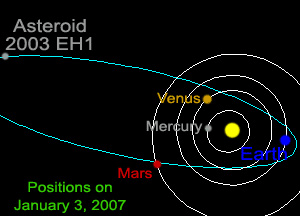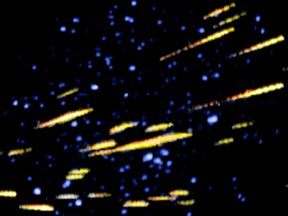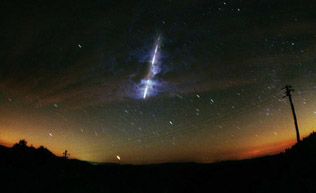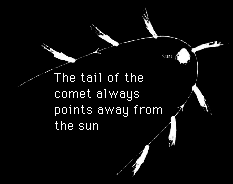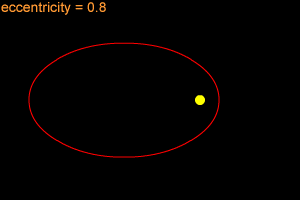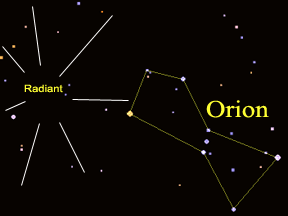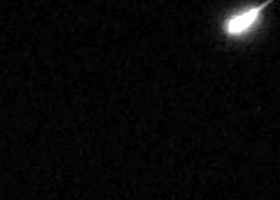Click on image for full size
Original animation by Windows to the Universe staff (Randy Russell). Images courtesy NASA/JPL.
Quadrantid Meteor Shower
Meteor showers are times when you can see a lot of meteors in one night. There are several different meteor showers. Each meteor shower happens at the same time every year. There is a meteor shower in January every year. That one is called the Quadrantid meteor shower.
The best night to see Quadrantid meteors is usually January 3rd. That night is called the "peak" of the meteor shower. You can usually see meteors from this shower for a few days before and after the peak night. If you are lucky, you might see more than 100 meteors in an hour on the peak night!
During a meteor shower, it looks like all of the meteors shoot outward from one place in the sky. That place is called the "radiant" of the meteor shower. Each shower has a different radiant. The radiant for the Quadrantid shower is in a constellation that doesn't exist any more! The constellation was called Quadrans Muralis. So even though the constellation is gone, the meteor shower is still called the Quadrantid shower.
Can you guess where meteors come from? Most meteors in meteor showers are actually dust from a comet! When a comet gets near the Sun and heats up, its ices melt and dust trapped in the ice escapes into space. The dust spreads out over the comet's orbit. When Earth crosses the comet's orbit, we run into the dust - and see a meteor shower!
The Quadrantids are a strange meteor shower. They were first seen in the 1820s or 1830s. Nobody could find the comet they came from for a long time. Finally, in 2003, an astronomer found an asteroid that had the right orbit for the Quadrantids. But most meteors come from comets, not asteroids. Some scientists think this asteroid is really a piece of an old, extinct comet. It might be part of a comet that astronomers in China, Korea, and Japan saw in 1490 and 1491. Maybe the comet broke apart, and made the Quadrantid meteor shower. Scientists are still trying to solve the puzzle of the Quadrantids.


